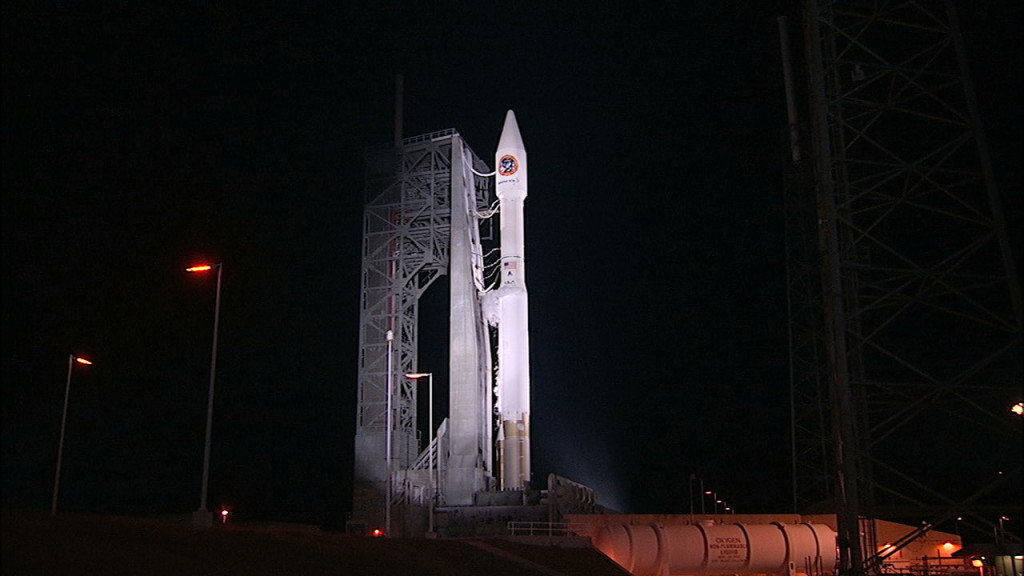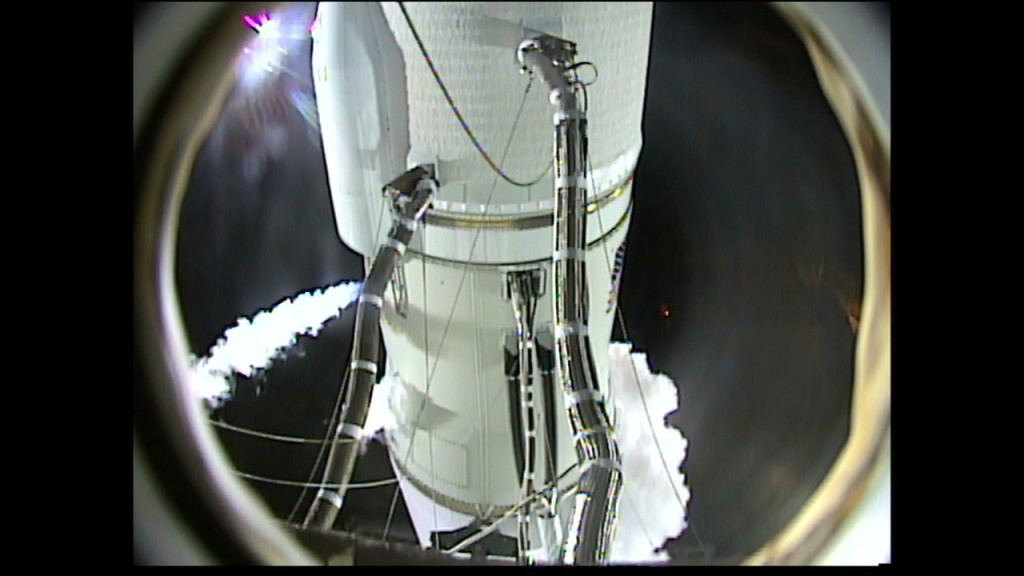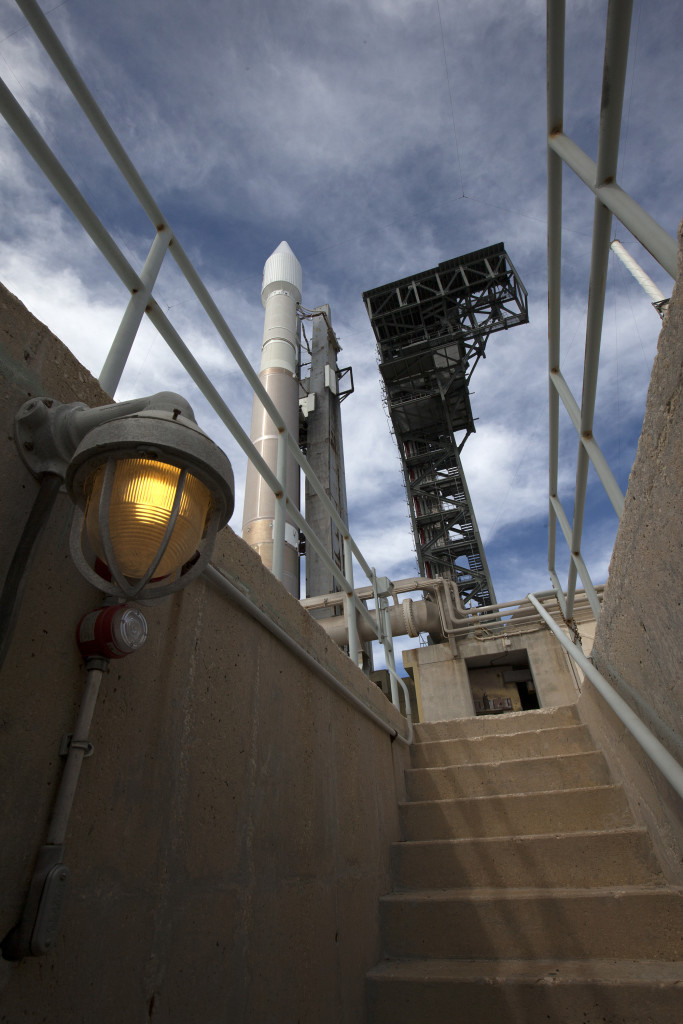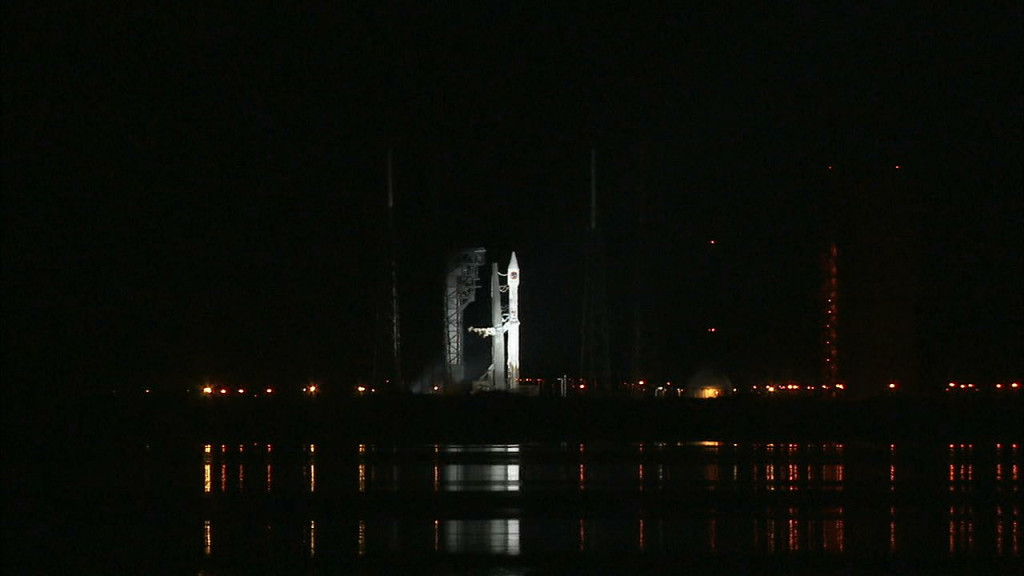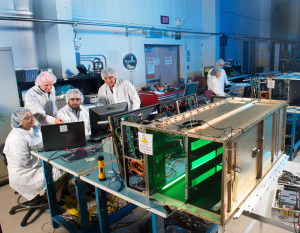The final steps of tonight’s countdown are taking pace at Space Launch Complex 41 as we near liftoff at 11:05:52 p.m. EDT.
T-4 Minutes and Counting
The final phase of tonight’s countdown is underway at T-4 minutes and counting. We are heading for a liftoff at 11:05 p.m. EDT.
Launch Teams Go for Launch
8 Minutes to Launch
Cygnus Switching to Internal Power
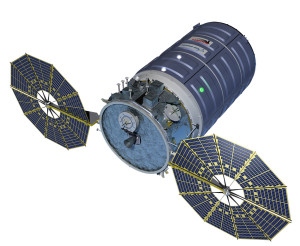 The Cygnus spacecraft at the top of the Atlas V rocket is switching to internal power, the launch team reports. That means it will run on its own batteries for the rest of the countdown and flight into orbit. Once flying on its own, the Cygnus will unfurl a pair of circular solar arrays and begin recharging the batteries using the sun’s energy.
The Cygnus spacecraft at the top of the Atlas V rocket is switching to internal power, the launch team reports. That means it will run on its own batteries for the rest of the countdown and flight into orbit. Once flying on its own, the Cygnus will unfurl a pair of circular solar arrays and begin recharging the batteries using the sun’s energy.
CRS-6: The Video
The CRS-6 mission boasts numerous opportunities for critical research into numerous areas and technologies. With the countdown in a planned hold at T-4 minutes but still on schedule for a 11:05 p.m. EDT liftoff, here is a look at the mission ahead for the Orbital ATK Cygnus spacecraft and United Launch Alliance Atlas V rocket. Photo credit: NASA/Ben Smegelsky
Weather Forecast Improves: 100 Percent ‘Go’
Forecasters with the Air Force’s 45th Weather Squadron see no chance of conditions that would threaten a launch tonight. The launch team is moving along toward a liftoff at 11:05 p.m. EDT.
Countdown Enters Planned Hold
At T-4 minutes, the countdown has paused for a planned hold lasting half-an-hour. Everything is on pace for a liftoff at 11:05 p.m. EDT, including the weather and tonight’s tanking process loading fuel and oxidizers into the two stages of the Atlas V rocket. The team will receive the final launch weather forecast from the Air Force’s 45th Space Wing. Then launch teams for NASA, Orbital ATK , and United Launch Alliance will conduct their final polls ahead of the liftoff.
Get to Know the Saffire Experiment
This cargo resupply mission offers numerous scientific opportunities for researchers in a wide variety of areas, including an experiment that will set a large fire inside the Cygnus module toward the end of the flight. The experiment is called Saffire, short for Spacecraft Fire Experiment, and you can read more details about it here. The research is important for crew safety and is much larger than previous projects that produced tiny flames. From the full story:
“A spacecraft fire is one of the greatest crew safety concerns for NASA and the international space exploration community,” said Gary Ruff, Saffire project manager.
Saffire will involve far larger flames than previous experiments and will investigate the way fire spreads on a variety of combustible materials. Because the experiments will be conducted away from the space station, there is no risk to the astronauts aboard.
Each Saffire experiment will be remotely operated inside a 3 x 5 foot module, split into two compartments. One side of the module is an avionics bay that contains sensors, high definition video cameras and signal processing equipment. The other side contains the hardware required to ignite a large flame and burn the fabrics and materials inside.
The Cygnus/Atlas V Stack
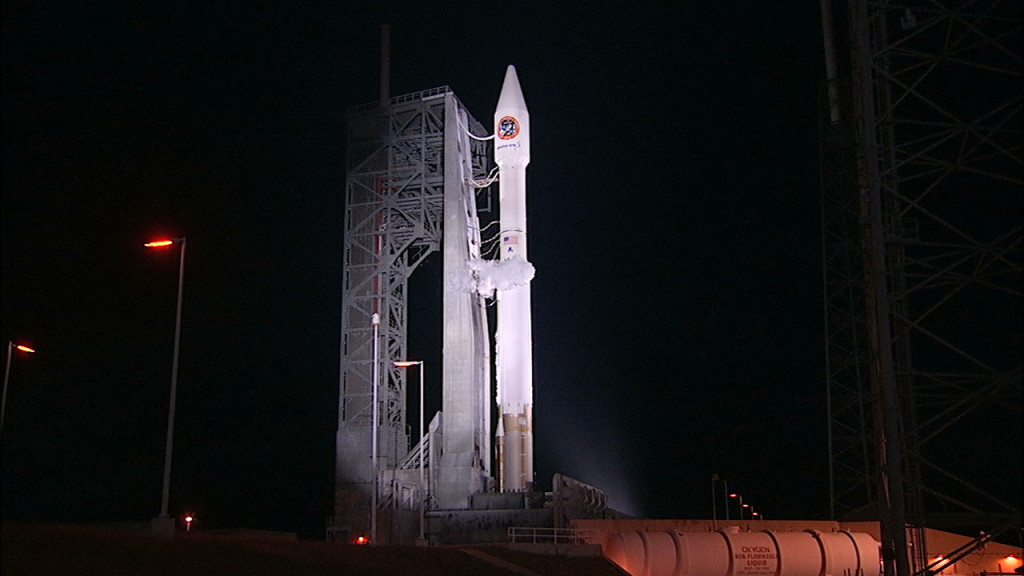
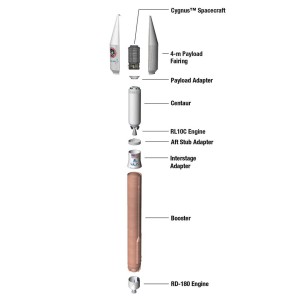 The United Launch Alliance Atlas V rocket that will lift the Orbital ATK Cygnus spacecraft into orbit is the -401 version and is comprised of two stages with a 4-meter fairing covering the Cygnus to protect it during the climb through the dense lower atmosphere. The first stage, burning liquid oxygen and refined kerosene, will lift the rocket and payload off the pad and power the first four minutes, 15 seconds of flight. It will then separate, allowing the Centaur upper stage to fire for another 14 minutes to put the cargo-laden Cygnus on its correct course to catch the International Space Station. The Centaur is powered by super-cold liquid oxygen and hydrogen.
The United Launch Alliance Atlas V rocket that will lift the Orbital ATK Cygnus spacecraft into orbit is the -401 version and is comprised of two stages with a 4-meter fairing covering the Cygnus to protect it during the climb through the dense lower atmosphere. The first stage, burning liquid oxygen and refined kerosene, will lift the rocket and payload off the pad and power the first four minutes, 15 seconds of flight. It will then separate, allowing the Centaur upper stage to fire for another 14 minutes to put the cargo-laden Cygnus on its correct course to catch the International Space Station. The Centaur is powered by super-cold liquid oxygen and hydrogen.

